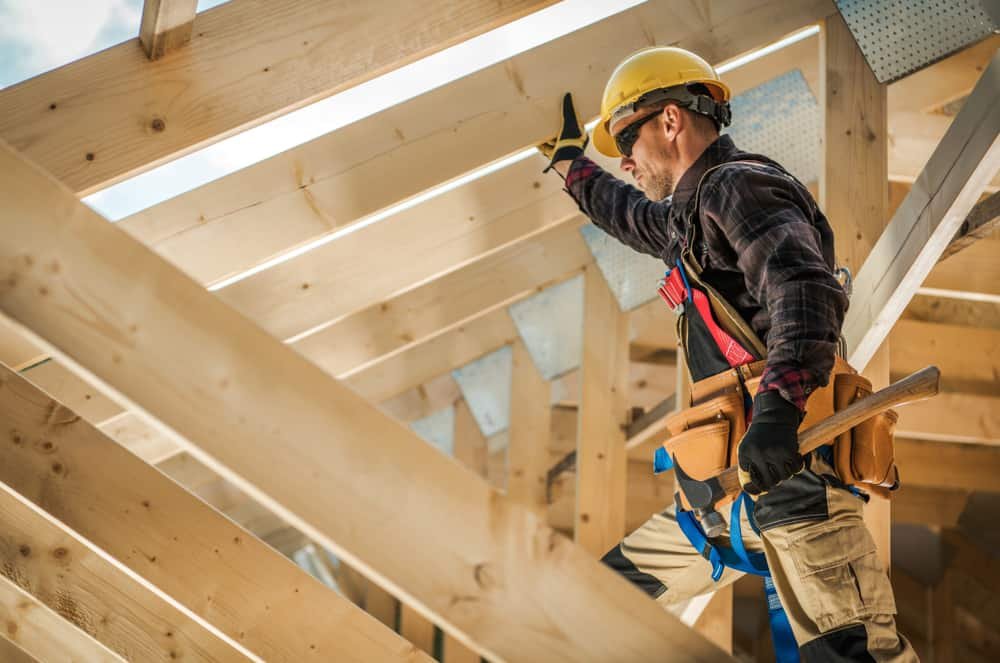Roofing Contractor in Lehigh, FL
Your Roof's Hurricane Shield
When Florida weather hits hard, you need more than just any roofing contractor—you need local experts who understand what Lehigh homes face every storm season.

Reviews
100% Customer Satisfaction

Local Roofing Contractor Lehigh
Your roof isn’t just protection—it’s your first line of defense against everything Florida throws at you. When you choose the right roofing contractor, you’re not just fixing a problem, you’re investing in years of worry-free protection.
Picture this: the next hurricane warning comes through, and instead of scrambling to cover furniture and wondering if your roof will hold, you’re confident. You know your roof was built by contractors who’ve seen what Hurricane Ian, Milton, and countless other storms can do to unprepared homes.
That’s the difference between a roof that just looks good and one that’s engineered for Lehigh’s reality. No more surprise leaks during the next heavy rain. No more wondering if you’ll be dealing with insurance headaches after the storm passes.
Lehigh Roofing Specialist
We’ve been protecting Lehigh Acres families since before Hurricane Charley changed how we think about roof construction. We’re not the contractors who show up after every storm with a clipboard and a sales pitch—we’re the ones your neighbors call when they need real solutions.
Our family-owned business understands something that fly-by-night contractors don’t: Lehigh isn’t just another pin on a map. It’s a community where people know each other, where word travels fast, and where doing right by your neighbors isn’t just good business—it’s how you sleep at night.
We’ve seen what works and what doesn’t when 120 mph winds test every nail, every shingle, and every decision made during installation. That experience shapes every job we take on, whether it’s a simple repair or a complete hurricane-resistant replacement.

Roof Repair Contractor Process
Here’s how we handle your roofing project from start to finish. First, we come out for a thorough inspection—not the kind where someone climbs up, looks around for five minutes, and gives you a number. We’re talking about a real assessment where we check for things other contractors miss: wind damage that isn’t obvious, areas where Florida’s heat has compromised materials, and spots where the next storm might find weakness.
Then we sit down and talk through what we found. No high-pressure sales tactics, no “limited time offers” that expire if you don’t sign today. Just honest conversation about what your roof needs, what your options are, and what each choice means for your budget and your peace of mind.
When you’re ready to move forward, we handle the permits, coordinate with your insurance if needed, and keep you informed every step of the way. Our crews show up when we say they will, work efficiently, and clean up like we were working on our own homes.

Ready to get started?
Roofing Services Lehigh FL
Every roofing contractor in Lehigh will tell you they do quality work. Here’s what makes our approach different: we specialize in the challenges that are unique to our area. We know that metal roofing performs differently in our humidity than it does in Arizona. We understand that tile roofs need specific installation techniques to handle our wind loads. We’ve learned that shingle selection isn’t just about color—it’s about how materials respond to our intense UV exposure.
When Hurricane Milton brought 38 tornadoes and 120 mph winds to our area, we weren’t learning on the job. We were applying two decades of experience with Florida storm damage. We know which materials hold up, which installation methods prevent failures, and how to work with insurance companies who understand the difference between quality work and quick fixes.
Whether you need emergency storm damage repair, a complete roof replacement, or just want an honest assessment of your current roof’s condition, we bring the same level of expertise to every job. Because in Lehigh, your roof isn’t just part of your house—it’s your family’s protection against some of the most challenging weather in the country.

